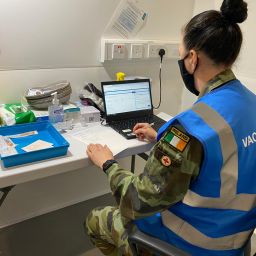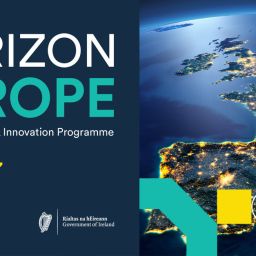
THREE MAJOR PANDEMIC AND CBRN PROJECTS JOIN FORCES TO STRENGTHEN EUROPE’S CAPACITY AGAINST FUTURE HEALTH CRISES
eNOTICE, PROACTIVE and PANDEM-2 projects host three-day conference at BAO Centre, Brussels
Tuesday 13th June 2023: Three EU-funded projects have jointly organised a three-day conference in Brussels to showcase their new tools and technologies developed to strengthen Europe’s response to future CBRNe (Chemical, Biological, Radiological, Nuclear and Explosive) and health crises. After a combined thirteen years of research, the eNOTICE, PROACTIVE and projects are ready to showcase their developments including a fully integrated dashboard for pandemic management, toolkits for CBRNe practitioners and civil society and enhanced CBRNe training capacity. In collaboration with CMINE, the projects will meet with members of the European Commission including the REA, DG SANTE, DG HERA and ECDC who are a member of the PANDEM-2 Advisory Board.
While Covid-19 was spreading at a rapid rate, demonstrating the need to address CBRNe risks and threats, the eNOTICE, PROACTIVE and PANDEM-2 projects each worked on different aspects of crisis management and response with real-time inputs from public health agencies, first responders and civil society organisations across Europe. Although each project has distinct aims and objectives, they all worked towards one shared goal: to protect the public by ensuring better preparedness and response for future crises. In addition, the projects identified various common recommendations which apply to both CBRNe events and pandemics.
Speaking at the conference today, PANDEM-2 coordinator Professor Máire Connolly from the University of Galway commented:
“Over the past two and a half years, PANDEM-2 has developed a suite of IT tools to improve how Europe prepares for and responds to future pandemics. We’ve also developed innovations in training to increase capacity between EU member states responding to pandemics on a cross-border basis. The COVID-19 pandemic has demonstrated the devastation a pandemic that inflicts on human populations. However, EU citizens continue to face increasing threats from naturally occurring pandemics, accidental release of a pandemic-prone pathogen, hybrid threats with deliberate release of a biological agent, chemical, radio nuclear events and climate change continue to pose significant threats to the health and security of EU citizens. These emergency situations require large-scale planning for preparedness to ensure countries have the capacity to respond to these events. To do this requires cross-sectoral cross border collaboration at an EU level which is why the conference today is so important and a step in that direction”.
With combined funding of €18.5 million, the research between eNOTICE, PROACTIVE and PANDEM-2 tackles current challenges in crisis preparedness and response and provides solutions that acknowledge ongoing processes and systems currently used across Europe.
eNOTICE coordinators Jean-Luc Gala and Olga Vybornova from the Université catholique de Louvain speaking on the network status of their project said:
“eNOTICE has matured to the point where it can contribute to capacity and capability building in the field of institutional and collective preparedness and response to CBRN cross-border events. Having mapped and labelled the capabilities of European training centres (TC), they are now categorised based on their expertise, training and testing capabilities, training infrastructure and specificities, and linked together via a continuously updated online information and communication platform – eNOTICE Community Center. From now on, this highly visible cooperative network is in a position to develop cross-disciplinary activities that bring together CBRN and safety stakeholders while striving for practitioner interoperability and procedure harmonisation.”
Grigore Havârneanu, Coordinator of the PROACTIVE project from the International Union of Railways, Paris, France added to this:
“PROACTIVE can help security practitioners make CBRNe crisis preparedness and response fair, accessible and inclusive. Over the last 50 months we’ve been liaising with more than 100 practitioner organisations and more than 50 civil society organisations, including vulnerable groups. These stakeholders have been directly engaged in our multitude of research and innovation activities. This strong engagement allowed PROACTIVE to co-create a crisis communication system for both practitioners and citizens as well as pre-incident information materials for the general public. These tools have been tested in three field training exercises where members of the public interacted with first responders. These outputs, combined with an Aide Memoire on how to include civil society in future exercises, will hopefully allow CBRNe practitioners and policymakers to improve societal resilience. I sincerely hope that PROACTIVE is a major step forward in bridging the gap between the technical aspects of CBRNe and behavioural science.”
For more information on the outputs of each project visit their corresponding websites here: eNOTICE, PROACTIVE, and PANDEM-2.
ENDS
If you wish to arrange an interview with a project representative, please contact:
Laura Daly, Carr Communications: ldaly@carrcommunications.ie OR
Sophie Popplewell, Carr Communications: sophie@carrcommunications.ie
Notes to Editor:
eNOTICE
The primary goal of the Horizon 2020 Framework Programme Project eNOTICE is to establish an interactive European network of civil and military training centres (TC), test and demonstration sites for improved CBRN risk assessment and management.
To date, the network has 51 civilian and military CBRN-TCs from 17 European countries and 5 countries outside the EU. A public catalogue with information on the member TCs is available at https://www.h2020-enotice.eu/static/catalogue.html.
eNOTICE has evolved into a dynamic and synergistic interdisciplinary network that actively seeks cross-border collaboration and interoperability through the coordination of inter-institutional multidisciplinary and multiagency exercises, with the goal of supporting a wide range of complex and diverse training scenarios, such as hybrid threats, emerging threats, combined chemical, biological, and radiological threats, as well as exchanging knowledge, and testing cutting-edge technology at various levels of maturity.
PROACTIVE
PROACTIVE aims to increase practitioner effectiveness in managing large and diverse groups of people in a chemical, biological, radiological, nuclear and explosive (CBRNe) environment. The main goal is to enhance preparedness against and response to a CBRNe incident through a better harmonization of procedures between various categories of practitioners, and a better articulation with the needs of vulnerable citizen groups. PROACTIVE resulted in toolkits for CBRNe practitioners and for civil society organisations. The project’s toolkit for practitioners includes a web collaborative platform for communication among LEAs as well as an innovative response tool in the form of a mobile app. The toolkit for civil society includes a mobile app adapted to various vulnerable citizen categories and pre-incident public information material. These results are in line with the overall Security Union approach to fighting crime and terrorism, they provide valuable inputs to the EUROPOL initiative to develop a knowledge hub for CBRNe activities and help consolidate the EU Action Plan to enhance preparedness for CBRN threats.
PANDEM-2
PANDEM-2 is an H2020 EU-funded project that aims to develop new solutions for efficient, EU-wide pandemic management. The goal of PANDEM-2 is to prepare Europe for future pandemics through innovations in technology and training and to build capacity between EU member states to respond to pandemics on a cross-border basis. The PANDEM-2 consortium comprises a total of 19 European partners with expertise in several key areas including epidemiology, software development, public health, and emergency care.
One of the PANDEM-2 outputs that is currently accessible is Pandem-Source, an open-source IT solution designed to meet the specific needs of public health agencies, governments and international organisations such as the ECDC and WHO.It enables the integration of real-time pandemic-relevant data from international systems (ECDC, TESSy), laboratory systems, social media (Twitter) and participatory surveillance which is web-based reporting of symptoms by volunteer citizens (e.g. Influenzanet). Click here to learn more.










